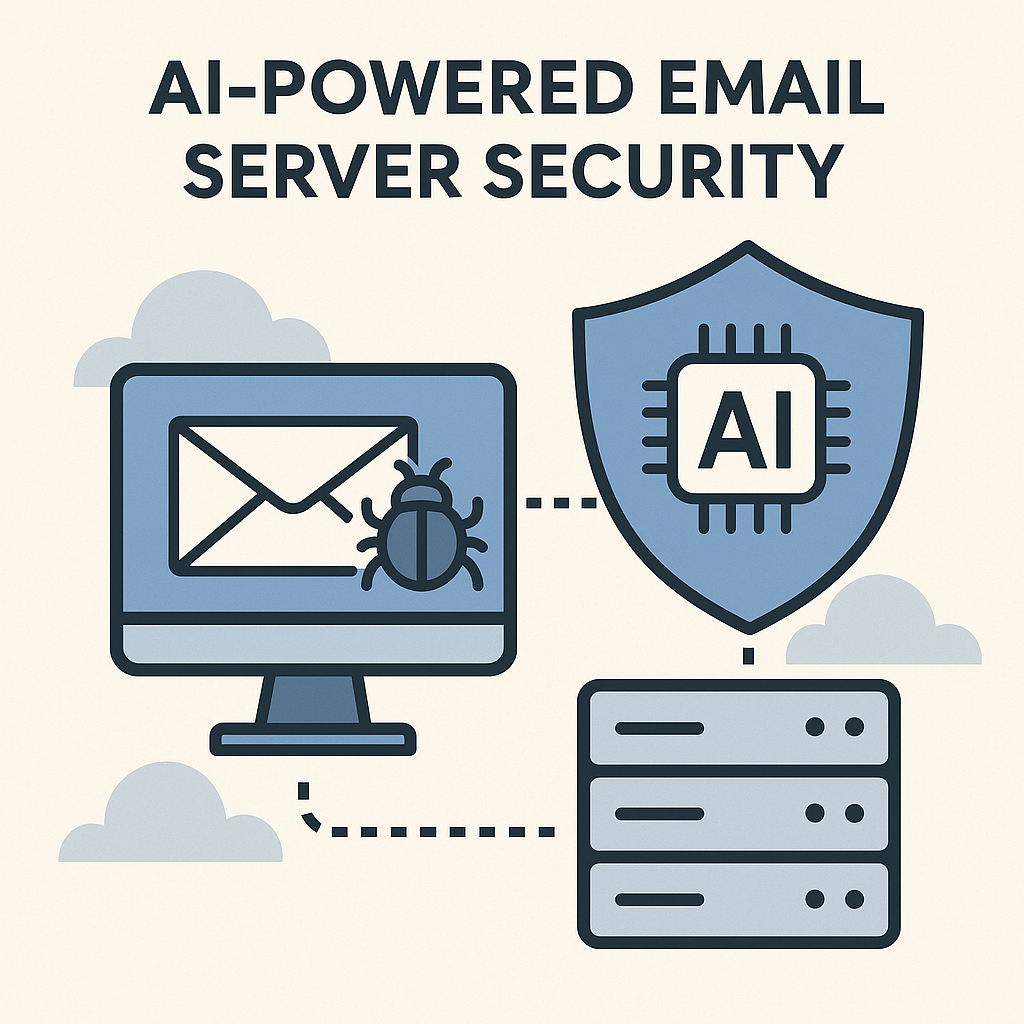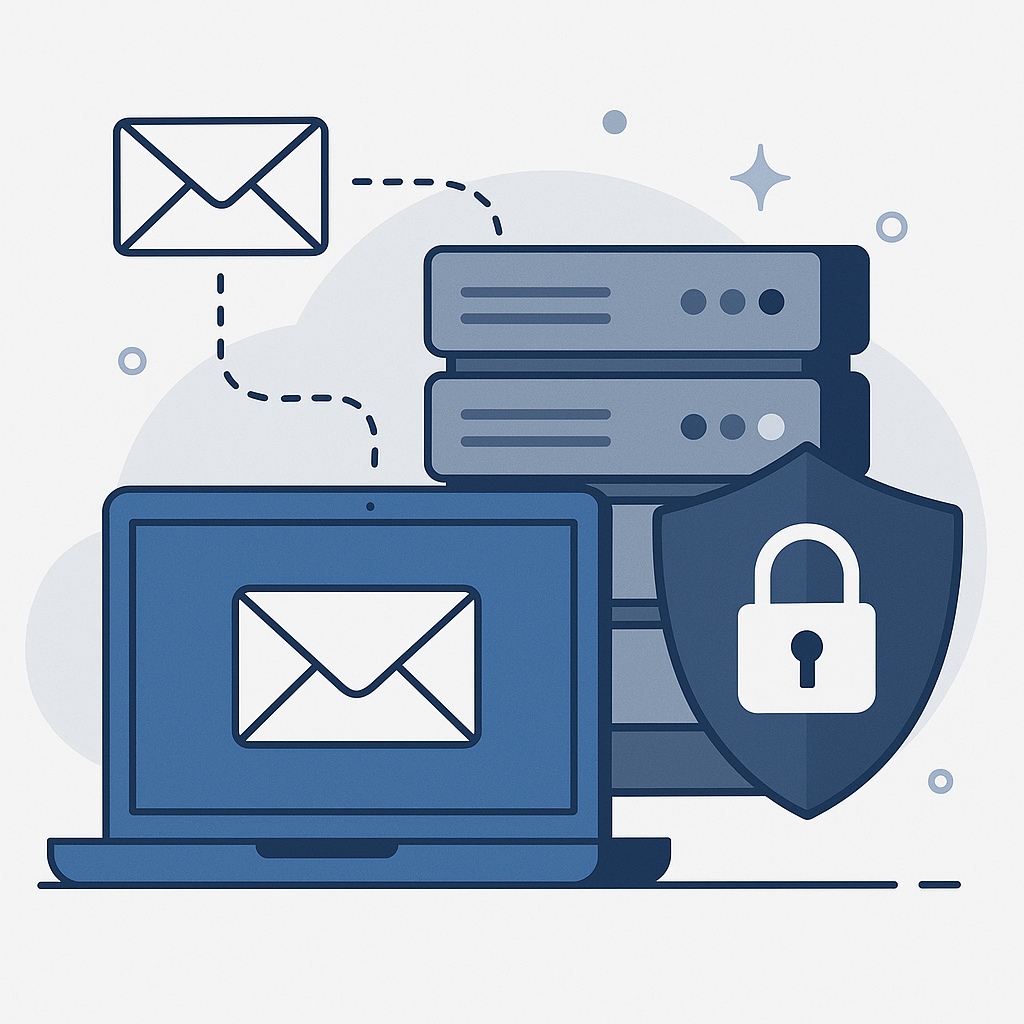AI-Powered Email Server Security: Protect Your Business

In today's hyper-connected world, email remains the lifeblood of business communication. From client proposals to internal memos, sensitive data flows constantly through our inboxes. However, this critical channel is also a prime target for cybercriminals. As threats grow more sophisticated, relying on outdated security measures for your email server is akin to leaving your front door wide open. This is where the transformative power of Artificial Intelligence (AI) enters the arena, revolutionizing email server security and offering businesses a robust, adaptive defense against an ever-evolving threat landscape. Protecting your digital communications is no longer just an IT concern; it's a fundamental pillar of business continuity and trust.
The Growing Need for Robust Email Server Security
Email has been a cornerstone of professional interaction for decades, but its very ubiquity makes it a high-value target. Cyber attackers leverage email for everything from widespread phishing campaigns to highly targeted Business Email Compromise (BEC) attacks. The sheer volume of emails processed daily means that even a single overlooked threat can have catastrophic consequences, leading to data breaches, financial loss, reputational damage, and operational disruption. Traditional security solutions, often reliant on static signature-based detection, struggle to keep pace with novel and polymorphic threats. This gap highlights an urgent need for more intelligent, dynamic, and proactive approaches to email server security. Businesses must adapt to protect their sensitive communications and maintain the integrity of their digital infrastructure.
Understanding the Modern Email Threat Landscape
The digital battlefield for email communication is constantly shifting. Cybercriminals are no longer just sending generic phishing emails hoping for a few clicks. Today's threats are often highly personalized and deceptive, designed to bypass traditional security filters and exploit human psychology. Key threats include:
- Phishing and Spear-Phishing: Attempts to trick users into revealing sensitive information (credentials, financial details) by impersonating trusted entities. Spear-phishing targets specific individuals or organizations with tailored messages.
- Malware and Ransomware: Malicious software delivered via email attachments or links, designed to encrypt data for ransom or steal sensitive information.
- Business Email Compromise (BEC): Sophisticated scams where attackers impersonate executives or trusted partners to trick employees into transferring funds or divulging confidential data. These attacks often lack malicious links or attachments, making them harder to detect.
- Zero-Day Exploits: Exploiting previously unknown software vulnerabilities before patches are available.
- Credential Stuffing and Account Takeover: Using stolen credentials from other breaches to gain unauthorized access to email accounts.
Statistics consistently show that a significant percentage of cyberattacks originate from email. For instance, a substantial portion of emails contain damaging links or files that can lead to data breaches and malware attacks. Protecting your system from these email threats is paramount for maintaining operational security. This evolving landscape demands more than just reactive measures; it requires advanced threat detection capabilities. As Darktrace highlights, effective email security is crucial to prevent data breaches and malware.
Key Vulnerabilities in Traditional Email Servers
Many organizations still rely on email server infrastructure that, while functional, harbors inherent vulnerabilities exploitable by modern cyber threats. Understanding these weak points is the first step toward strengthening your defenses.
- Outdated Software and Unpatched Systems: Software vulnerabilities are a primary entry point for attackers. If email server software, operating systems, or related applications are not regularly updated and patched, they remain susceptible to known exploits.
- Weak Authentication Mechanisms: Relying solely on passwords for access is a significant risk. Weak or easily guessable passwords, coupled with a lack of multi-factor authentication (MFA), make accounts vulnerable to brute-force attacks and credential stuffing.
- Unencrypted Data Transmission: If emails are not transmitted over encrypted connections (like TLS), they can be intercepted and read by eavesdroppers, exposing sensitive business communications.
- Lack of Advanced Threat Detection: Traditional spam filters often rely on known malicious signatures or keywords. They struggle to identify novel phishing attempts, sophisticated malware variants, or BEC scams that mimic legitimate communication patterns.
- Human Error and Lack of Awareness: Employees remain a critical component of security. Without adequate training on identifying phishing attempts or handling suspicious emails, they can inadvertently become the weakest link, clicking malicious links or opening infected attachments.
- Misconfigurations: Improperly configured security settings on the email server can inadvertently expose sensitive data or grant unauthorized access.
Addressing these email server vulnerabilities requires a multi-layered approach that goes beyond basic security protocols to ensure comprehensive email infrastructure protection.
How AI is Revolutionizing Email Server Security
Artificial Intelligence and Machine Learning (ML) are fundamentally changing the game for email server security. Unlike traditional, rule-based systems that react to known threats, AI-powered solutions can learn, adapt, and predict potential attacks in real-time. This shift from reactive to proactive defense is crucial in combating sophisticated cyber threats.
AI excels in several key areas:
- Advanced Threat Detection: AI algorithms can analyze vast amounts of data – including email content, sender reputation, attachment types, and recipient behavior – to identify anomalies and patterns indicative of malicious activity. This allows for the detection of zero-day exploits and novel phishing techniques that signature-based systems would miss. For example, AI can detect subtle linguistic cues or unusual sending patterns characteristic of BEC scams.
- Intelligent Spam and Phishing Filtering: AI goes beyond simple keyword matching to understand the context, sentiment, and intent of emails. This leads to significantly more accurate spam filtering and a higher detection rate for sophisticated phishing attempts, reducing the likelihood of employees falling victim.
- Behavioral Analysis: AI can establish baseline behaviors for users and systems. Deviations from these norms, such as unusual login times, locations, or sending volumes from an email account, can be flagged as potential security incidents, enabling rapid response.
- Automated Response and Remediation: AI can automate responses to detected threats, such as quarantining suspicious emails, blocking malicious senders, or alerting security teams, thereby reducing manual workload and response times.
By leveraging AI, organizations can achieve greater efficiency in identifying and neutralizing threats. As Comport notes, "It’s more efficient to lean toward the latter. And that’s what happens with AI powered email security. The AI can do the heavy lifting of making small decisions. This keeps your team focused on the big picture." This capability ensures your email infrastructure protection is not only robust but also agile and efficient, a key aspect of modern AI in cybersecurity. Acronis also emphasizes how AI-powered solutions integrate real-time threat intelligence to stay ahead of emerging attacks.
Implementing AI-Powered Threat Detection and Prevention
Integrating AI into your email security strategy involves adopting solutions that leverage these intelligent capabilities. The goal is to build a proactive defense system that can anticipate and neutralize threats before they impact your organization.
Key areas where AI-powered solutions make a significant impact include:
- Next-Generation Antivirus and Anti-Malware: AI enhances traditional malware detection by identifying malicious code based on behavior and characteristics rather than just known signatures. This is critical for combating polymorphic malware and fileless attacks.
- Advanced Phishing and BEC Detection: AI-driven Natural Language Processing (NLP) can analyze the content, tone, and context of emails to identify fraudulent intent, impersonation attempts, and urgent requests typical of BEC scams. This is a significant upgrade from simple keyword filters.
- URL and Attachment Scanning: AI can perform sandboxed analysis of links and attachments in real-time, simulating execution to detect malicious payloads or redirect attempts without user interaction.
- Real-time Threat Intelligence: AI-powered email security solutions integrate real-time threat intelligence feeds to stay abreast of the latest email-based threats and attack tactics. By correlating external threat data with internal network activity, they can provide context and enhance detection accuracy.
- User and Entity Behavior Analytics (UEBA): AI can monitor user activity associated with email accounts, detecting anomalies like unusual login patterns, access to sensitive data, or abnormal communication activities that might indicate a compromised account.
Solutions like those offered by Vade provide comprehensive and proactive protection, securing emails, data, and ensuring regulatory compliance through AI. Implementing these advanced capabilities is essential for effective proactive email defense and robust AI email security.
Best Practices for Enhancing Email Server Security
While AI offers powerful capabilities, it's most effective when integrated into a comprehensive security strategy. Adopting a holistic approach ensures that all aspects of your email infrastructure are fortified. Here are essential best practices:
- Implement Strong Authentication: Mandate Multi-Factor Authentication (MFA) for all users. Also, ensure proper configuration of email authentication protocols like SPF (Sender Policy Framework), DKIM (DomainKeys Identified Mail), and DMARC (Domain-based Message Authentication, Reporting & Conformance). These protocols help prevent email spoofing and sender impersonation.
- Keep Software Updated: Regularly update and patch your email server software, operating systems, and any related applications. Automate this process where possible to close known email server vulnerabilities promptly.
- Employee Training and Awareness: Conduct regular security awareness training for all staff. Educate them on identifying phishing attempts, recognizing suspicious emails, and understanding the importance of strong passwords and data privacy.
- Principle of Least Privilege: Grant users only the necessary access permissions required for their roles. This limits the potential damage if an account is compromised.
- Data Encryption: Ensure that email data is encrypted both in transit (using TLS) and at rest. This protects sensitive information from unauthorized access, even if the server is breached.
- Regular Security Audits and Monitoring: Conduct periodic security audits of your email server configuration and access logs. Implement continuous monitoring to detect and respond to suspicious activities quickly.
- Robust Backup and Disaster Recovery: Maintain regular, secure backups of your email data and have a well-tested disaster recovery plan in place.
For busy executives and IT professionals, managing these security layers can be demanding. Leveraging advanced tools can significantly streamline operations. For instance, consider using an ai executive assistant to help manage your email communications securely and efficiently, freeing up valuable time. Exploring comprehensive email management tools can also provide greater oversight and control over your inbox. Whether it's using an artificial assistant to help triage messages or an AI assistant app to manage your inbox, technology can bolster your security posture and productivity.
AI's Role in Data Encryption and Compliance
Beyond threat detection, AI plays a crucial role in enhancing data security through encryption and ensuring adherence to regulatory standards. Protecting sensitive business communications is not just about preventing breaches; it's also about safeguarding data privacy and meeting compliance requirements.
- Intelligent Data Classification: AI can be used to automatically classify sensitive data within emails, such as PII (Personally Identifiable Information), financial details, or intellectual property. This classification is essential for applying appropriate security controls, including encryption.
- Automated Encryption Enforcement: Once sensitive data is identified, AI can trigger automated encryption policies, ensuring that confidential information is protected both in transit and at rest. This reduces the risk of accidental data exposure.
- Compliance Monitoring: AI-powered systems can continuously monitor email traffic for compliance violations, such as the unauthorized transmission of sensitive data or non-adherence to data retention policies. This proactive approach helps organizations meet stringent regulations like GDPR, HIPAA, and CCPA.
- Anomaly Detection for Compliance: AI can detect unusual patterns in email activity that might indicate a compliance breach or a security incident. For example, it might flag an unusual number of emails containing specific keywords being sent externally.
By integrating AI into your secure email management practices, you not only bolster your defenses against cyber threats but also ensure that your organization remains compliant with industry regulations, protecting valuable data and maintaining customer trust. Solutions from providers like Barracuda Networks often integrate these advanced features to offer comprehensive protection.
Conclusion: Securing Your Email Infrastructure for Future Growth
In an era where cyber threats are increasingly sophisticated and pervasive, robust email server security is non-negotiable for businesses of all sizes. Traditional security methods are no longer sufficient against the advanced tactics employed by cybercriminals. Artificial Intelligence offers a paradigm shift, enabling advanced threat detection, intelligent prevention, and proactive defense mechanisms that can adapt to emerging threats in real-time.
By understanding the evolving threat landscape, identifying critical email server vulnerabilities, and implementing AI-powered solutions, organizations can significantly enhance their email infrastructure protection. Coupled with best practices such as strong authentication, continuous employee training, and data encryption, AI forms a powerful shield for your digital communications. Embracing AI email security is not just about mitigating risk; it's about building a resilient, secure foundation that supports business continuity, protects sensitive data, and fosters trust with clients and partners.
The future of secure communication is intelligent. Invest in AI-powered email security today to safeguard your business and pave the way for sustainable growth.



